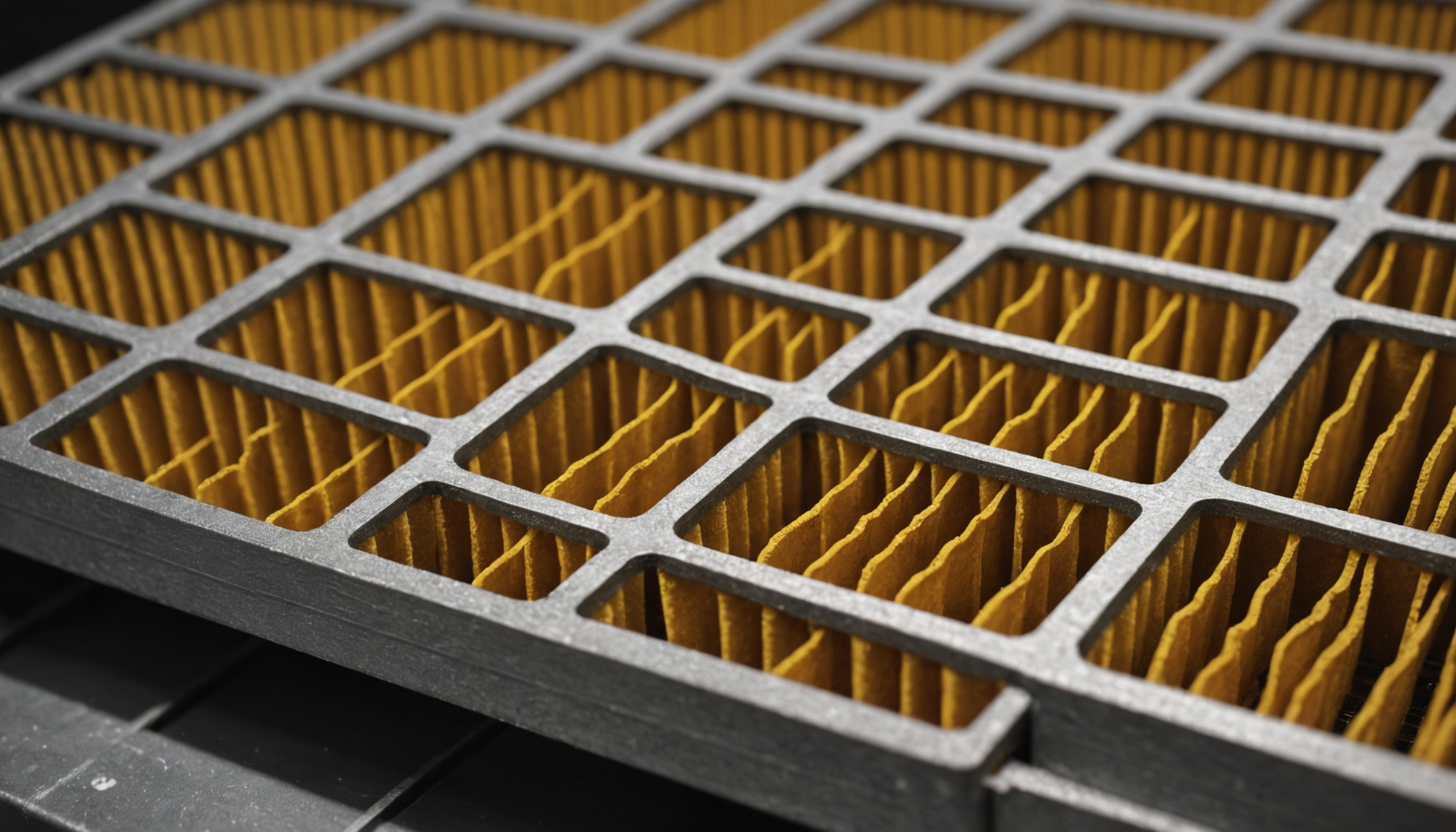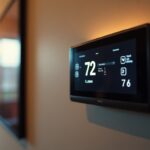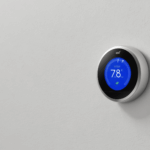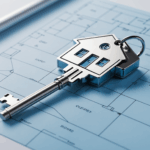One of the primary steps in preventative HVAC maintenance is the early identification of potential issues, which is crucial for achieving significant cost savings. Identifying these problems before they evolve into major repairs or necessitate full system replacements can save homeowners thousands of dollars. Recognizing signs of trouble early on ensures that you address these issues through routine heating and air repair, prolonging the lifespan of your HVAC system and enhancing its efficiency.
To effectively pinpoint potential HVAC problems, it’s essential to be on the lookout for unusual noises such as grinding or squealing, which may indicate a problem with the blower motor or bearings. Similarly, the presence of strange odors, such as a burning smell, could be a sign of electrical issues or dust accumulation within the heating system. Inconsistencies in temperature between different areas of the home, typically suggestive of ductwork problems, also warrant immediate attention to prevent future airflow restrictions or energy inefficiencies.
Regular HVAC upkeep should also involve examining your energy bills for unexpected increases. A sudden surge in energy costs often signals that your system is working harder than necessary, possibly due to clogged filters, refrigerant leaks, or failing components. Additionally, frequent cycling on and off or longer operating times could imply problems with the thermostat or a system that no longer meets the demands of your home.
A vigilant approach to HVAC maintenance not only addresses the present concerns but also helps in anticipating future requirements. Many HVAC professionals recommend routine maintenance checks alongside paying close attention to the system’s overall performance. Utilizing detailed inspections, homeowners can better prepare by replacing parts that naturally wear out over time, such as belts and filters, before they fail entirely.
| Potential Problems | Warning Signs | Prevention Tips |
| Clogged Filters | Reduced airflow, increased dust in home | Replace filters every 1-3 months |
| Refrigerant Leaks | Warm air from vents, hissing sounds | Annual refrigerant checks |
| Thermostat Issues | Frequent cycles, inaccurate temperature | Regular calibration and updates |
| Ductwork Problems | Uneven temperature, higher energy bills | Inspections for leaks and damage |
By being proactive and addressing these potential issues promptly, you can ensure the most efficient operation of your HVAC system, leading to long-term cost savings and decreased need for emergency repairs. Keep in mind that early diagnosis and intervention are key strategies in the broader context of preventative HVAC maintenance.
Benefits of regular maintenance
Regular maintenance of your HVAC system brings a multitude of benefits, going beyond mere cost savings to ensure peace of mind and comfort throughout the year. By incorporating a consistent upkeep routine, homeowners can truly harness the full potential of their heating and cooling systems. Here are some of the key advantages of regular HVAC maintenance:
1. Enhanced Energy Efficiency: A well-maintained HVAC system operates more efficiently, reducing energy consumption and lowering your utility bills. Over time, components like filters and coils can become clogged or dirty, forcing the system to work harder to achieve the desired temperature. Regular cleaning and replacement of these components ensure the system runs smoothly, maximizing energy efficiency.
2. Extended Equipment Lifespan: Regular maintenance not only keeps the system running efficiently but also significantly extends its lifespan. During maintenance checks, minor issues like worn-out belts or small leaks are identified and repaired before they escalate into significant failures that could shorten the system’s life. By investing in routine heating and air repair, you’re ensuring that your HVAC system serves you well for many years.
3. Improved Air Quality: An often-overlooked benefit of regular HVAC upkeep is the improvement in indoor air quality. Dust, pollen, and other allergens can accumulate in your HVAC system, compromising the air you breathe. Routine maintenance includes cleaning and replacing air filters, which helps to reduce the distribution of these pollutants, contributing to a healthier living environment.
4. Reduced Need for Emergency Repairs: A system that is regularly serviced is less likely to break down unexpectedly, especially during high-demand periods such as summer and winter. Scheduled maintenance identifies and addresses potential problems before they result in costly emergency repairs, providing you with uninterrupted comfort and peace of mind.
5. Optimal Comfort: Regular maintenance ensures that your HVAC system provides consistent and optimal comfort. It minimizes the risk of issues like uneven heating or cooling, temperature inconsistencies, and insufficient airflow. When every component operates at its best, you can enjoy a more comfortable and inviting home environment.
6. Safety Assurance: Safety is paramount when it comes to HVAC systems. Regular maintenance checks involve inspecting critical components for signs of wear or failure that could pose safety risks, such as electrical issues or fuel leaks in gas-powered systems. By keeping the system in good condition, you’re protecting your home and family from potential hazards.
7. Environmental Benefits: An efficient HVAC system reduces your carbon footprint by using less energy, thereby having a positive impact on the environment. Furthermore, proper maintenance reduces the likelihood of refrigerant leaks, which are harmful to the environment.
Regular HVAC maintenance is more than just a strategy for immediate cost savings. It represents a commitment to protecting your investment, ensuring comfort, enhancing safety, and fostering a healthier environment for your home over time. By implementing a scheduled maintenance plan, you can enjoy all these benefits and more, making it an integral part of responsible homeownership.
Steps for a thorough HVAC inspection
For a successful HVAC maintenance strategy, a detailed and systematic inspection process is essential. This step-by-step guide focuses on ensuring each component of your system is thoroughly evaluated to spot minor issues before they become major ones, leading to substantial cost savings.
Begin with the visual inspection of the HVAC unit. Look for any visible signs of wear and tear, including rust, loose panels, or damaged electrical connections. This preliminary step can quickly flag potential issues that require further attention. Ensure that all fasteners and supports are intact and secure, as these form the foundation of the system’s structure.
Next, move on to the filter check and replacement. Dirty or clogged filters force the HVAC system to work harder than necessary, decreasing efficiency and potentially leading to overheating or system failure. Replace air filters every 1-3 months to maintain optimal airflow and air quality, a crucial element of regular HVAC upkeep.
Following this, conduct a thorough cleaning of the condenser and evaporator coils. Over time, these coils collect dirt and debris, affecting heat absorption and dissipation. Gently clean the coils using a soft brush or vacuum, or hire a professional for more thorough cleaning to restore maximum efficiency.
The inspection of the blower assembly is another critical step. The blower motor and fan should operate smoothly without undue resistance. Listen for unusual noises like grinding, which could indicate a worn motor bearing. These early detections can prevent larger, more costly repairs.
Moreover, evaluate the thermostat settings and functionality. Ensure that it accurately reflects the actual room temperature and cycles the HVAC system appropriately. Test the system’s response by adjusting the thermostat settings and observing if the system replicates the desired changes. Periodic calibration of the thermostat can lead to more accurate temperature control, contributing to significant energy conservation and cost savings.
Proceed to inspect the ductwork for leaks or obstructions. Faulty ductwork can lead to uneven temperatures across your home and wasted energy. Look for visible gaps or listen for air escaping from seams. Sealing any leaks with duct mastic or metal tape can restore the system’s efficiency and reliability.
Lastly, check the refrigerant levels. An HVAC system with insufficient refrigerant cannot maintain its cooling efficiency, leading to potential compressor damage. Any noticeable decrease in cooling performance or the presence of ice on the coils may indicate a refrigerant issue. Have a professional conduct a detailed assessment and recharge or repair the system as needed.
Performing these steps meticulously during a thorough HVAC inspection ensures that your heating and cooling system operates efficiently and reliably throughout the year. Effective inspections are pivotal in preventative maintenance, ultimately leading to reduced need for emergency heating and air repair and long-term cost savings. Regular professional inspections complement your maintenance routine, providing peace of mind and safeguarding your home investment.
Cost comparison of repairs versus replacement
When evaluating whether to repair or replace your HVAC system, conducting a comprehensive cost comparison is essential to make an informed decision. By analyzing the financial implications of repairs versus complete replacement, you can optimize your investment and achieve significant cost savings over the long term.
Firstly, consider the current age and condition of your existing HVAC system. Typically, the average lifespan of most HVAC units ranges between 10 to 15 years. If your system is approaching or has surpassed this timeframe, frequent repairs might indicate it’s nearing the end of its useful life. In such cases, the cost of continuous heating and air repair can surpass the benefits, making replacement a more cost-effective option.
Budget is another critical factor in this decision-making process. While the initial cost of replacing an HVAC system is higher than performing repairs, it’s crucial to evaluate the potential for reduced utility bills and increased efficiency that a new unit can offer. Modern HVAC systems boast significant advancements in energy efficiency, leading to lower operating costs and contributing to long-term financial savings. Additionally, newer systems often come with better warranties, reducing potential future expenses on repairs.
You should also consider the frequency and type of breakdowns your system experiences. If your unit consistently requires major repairs or encounters recurrent issues that hinder performance, investing in a new system may protect you from unexpected repair costs and reduce the risk of complete failure at inopportune times.
Furthermore, factor in potential earnings from government incentives or rebates for upgrading to a more energy-efficient model. These incentives can significantly offset the initial cost of a new system, enhancing the overall financial viability of replacement over continued repairs.
Remember to calculate potential disruptions involved with both scenarios. While repairs can offer a quick fix, they sometimes come with the inconvenience of multiple service calls, particularly if the problem persists. On the other hand, replacement involves a one-time installation effort that can deliver long-term peace of mind.
Lastly, consider the enhanced performance benefits and improved comfort levels a new system can deliver. Advances in HVAC technology mean modern systems provide more consistent temperature control, quieter operation, and enhanced indoor air quality—all valuable benefits contributing to a more comfortable home environment.
Ultimately, weighing the costs of repairs against potential replacement requires a careful assessment of the current state and efficiency of your HVAC system, as well as the associated long-term benefits. Seeking advice from a trusted HVAC service provider can help you navigate these choices, ensuring you make a decision that aligns with your financial and comfort goals. By thoughtfully evaluating these factors, you can ensure meaningful cost savings while enhancing your home’s heating and air performance.
Tips for choosing a reliable HVAC service provider
Selecting a trustworthy HVAC service provider is crucial for maintaining the efficiency and longevity of your system. To begin, seek recommendations from friends, family, or neighbors who have had positive experiences with local providers. Personal referrals can offer valuable insights into the provider’s reliability and quality of service.
Next, research potential providers online and check their reviews and ratings on trusted platforms such as the Better Business Bureau (BBB) or Angie’s List. A company with consistently high ratings and positive customer feedback is often indicative of its commitment to customer satisfaction and professionalism.
Licensing and certification are essential factors to consider. Ensure that the HVAC provider is fully licensed and certified in your state to perform heating and air repair. This certification serves as proof that they have the necessary training and adhere to industry standards. Additionally, inquire if technicians are NATE (North American Technician Excellence) certified, as this is a respected credential in the HVAC industry.
Experience is another key consideration. An established company with several years of experience is more likely to have encountered a diverse range of issues and is well-equipped to handle your specific needs efficiently. Experienced providers also tend to have a proven track record of delivering quality service and achieving cost savings for their clients through expert preventive maintenance and repair techniques.
Request a written estimate from the provider before any work begins. A reputable HVAC service provider will offer transparent pricing and be willing to explain the details of the estimate. This clarity helps you understand what you are paying for and ensures there are no hidden costs. Comparing estimates from multiple providers can give you a better idea of the average cost and help you make an informed decision.
Customer service is the backbone of a reliable HVAC service provider. Assess their responsiveness, willingness to answer your questions, and the level of detail they provide in their explanations. Providers that take the time to involve you in the maintenance process and educate you on HVAC upkeep are valuable allies in maintaining your system’s performance.
Finally, check the types of services offered and any guarantees or warranties accompanying their work. Providers who stand behind their work with service guarantees or warranties demonstrate confidence in their quality and assure you of their commitment to fixing any potential issues at no extra cost.
In conclusion, preventative HVAC maintenance is an essential strategy for homeowners seeking to ensure their systems operate optimally, extending their lifespan while achieving significant cost savings. By identifying and addressing minor issues before they escalate and choosing a reliable HVAC service provider, you can maintain a comfortable, efficient, and safe home environment. Investing time in regular system upkeep and informed decision-making will help you enjoy uninterrupted comfort and reduce the risk of costly emergency repairs, ultimately enhancing your overall home investment.











